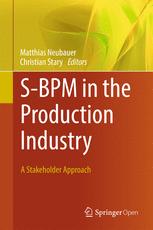

Most ebook files are in PDF format, so you can easily read them using various software such as Foxit Reader or directly on the Google Chrome browser.
Some ebook files are released by publishers in other formats such as .awz, .mobi, .epub, .fb2, etc. You may need to install specific software to read these formats on mobile/PC, such as Calibre.
Please read the tutorial at this link. https://ebooknice.com/page/post?id=faq
We offer FREE conversion to the popular formats you request; however, this may take some time. Therefore, right after payment, please email us, and we will try to provide the service as quickly as possible.
For some exceptional file formats or broken links (if any), please refrain from opening any disputes. Instead, email us first, and we will try to assist within a maximum of 6 hours.
EbookNice Team

Status:
Available0.0
0 reviewsThis book is open access under a CC BY-NC 4.0 license.
This volume presents several case studies highlighting the latest findings in Industry 4.0 projects utilizing S-BPM features. Their potential is explored in detail, while the limits of engineering a company from a communication-centred perspective are also discussed.
After a general introduction and an overview of the book in chapter 1, chapter 2 starts by condensing the industrial challenges driven by the German “Industry 4.0” trend to form a concrete vision for future production industries. Subsequently, chapter 3 introduces the basic concepts of S-BPM and its capabilities, in particular for supporting the restructuring of processes. The next three chapters then present various case studies, e.g. at an SME offering the production of atypical, unique and special purpose machinery, equipment and technologically complex units particularly useful in the automotive and electronic industries; and at a further SME producing highly-customized floor cleaning machines. Rounding out the coverage, the last two chapters summarize the achievements and lessons learned with regard to the road ahead.
Overall, the book provides a realistic portrait of the status quo based on current findings, and outlines the future activities to be pursued in order to establish stakeholder-centred digital production systems. As such, developers, educators, and practitioners will find both the conceptual background and results from the field reflecting the state-of-the-art in vertical and horizontal process integration.